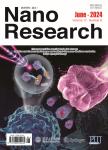Accurate atomic scanning transmission electron microscopy analysis enabled by deep learning
作者机构:Shanghai Key Laboratory of Intelligent Sensing and Detection TechnologyEast China University of Science and TechnologyShanghai 200237China School of Mechanical and Power EngineeringEast China University of Science and TechnologyShanghai 200237China Key Laboratory of Pressure Systems and Safety of Ministry of EducationEast China University of Science and TechnologyShanghai 200237China
出 版 物:《Nano Research》 (纳米研究(英文版))
年 卷 期:2024年第17卷第4期
页 面:2971-2980页
核心收录:
学科分类:08[工学] 0805[工学-材料科学与工程(可授工学、理学学位)] 0703[理学-化学] 0803[工学-光学工程] 0702[理学-物理学]
基 金:supported by the National Natural Science Foundation of China(Nos.52105145 and 12274124) the Shanghai Pilot Program for Basic Research(No.22TQ1400100-6) the Fundamental Research Funds for the Central Universities
主 题:deep learning low-dimensional materials atomic defects single atoms
摘 要:Currently,the machine learning(ML)-based scanning transmission electron microscopy(STEM)analysis is limited in the simulative stage,its application in experimental STEM is needed but ***,we built up a universal model to analyze the vacancy defects and single atoms accurately and rapidly in experimental STEM images using a full convolution *** our model,the unavoidable interference factors of noise,aberration,and carbon contamination were fully considered during the training,which were difficult to be considered in the *** toward the simultaneous identification of various vacancy types and low-contrast single atoms in the low-quality STEM images,our model showed rapid process speed(45 images per second)and high accuracy(95%).This work represents an improvement in experimental STEM image analysis by ML.



